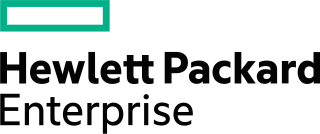
The Ames Research Center (ARC), also known as NASA Ames, is a major NASA research center at Moffett Federal Airfield in California's Silicon Valley. It was founded in 1939 as the second National Advisory Committee for Aeronautics (NACA) laboratory. That agency was dissolved and its assets and personnel transferred to the newly created National Aeronautics and Space Administration (NASA) on October 1, 1958. NASA Ames is named in honor of Joseph Sweetman Ames, a physicist and one of the founding members of NACA. At last estimate NASA Ames had over US$3 billion in capital equipment, 2,300 research personnel and a US$860 million annual budget.

Free and Open source Software Developers' European Meeting (FOSDEM) is a non-commercial, volunteer-organized European event centered on free and open-source software development. It is aimed at developers and anyone interested in the free and open-source software movement. It aims to enable developers to meet and to promote the awareness and use of free and open-source software.
In computing, a solution stack or software stack is a set of software subsystems or components needed to create a complete platform such that no additional software is needed to support applications. Applications are said to "run on" or "run on top of" the resulting platform.
Infrastructure as a service (IaaS) is a cloud computing service model where a cloud services vendor provides computing resources such as storage, network, servers, and virtualization. This service frees users from maintaining their own data center, but they must install and maintain the operating system and application software. Iaas provides users high-level APIs to control details of underlying network infrastructure such as backup, data partitioning, scaling, security and physical computing resources. Services can be scaled on-demand by the user. According to the Internet Engineering Task Force (IETF), such infrastructure is the most basic cloud-service model. IaaS can be hosted in a public cloud, a private cloud, or a hybrid cloud.

WSO2 LLC is an open-source technology provider founded in 2005. It delivers software and cloud solutions that provide foundational technologies for application development and identity and access management (IAM). This represents an expansion upon its original focus on integrating application programming interfaces (APIs), applications, and web services locally and across the Internet.

The Open Cloud Computing Interface (OCCI) is a set of specifications delivered through the Open Grid Forum, for cloud computing service providers. OCCI has a set of implementations that act as proofs of concept. It builds upon World Wide Web fundamentals by using the Representational State Transfer (REST) approach for interacting with services.

Chris C. Kemp is an American entrepreneur who, along with Dr. Adam London, founded Astra, a space technology firm based in California, in 2016. He served as the chief information officer (CIO) for the NASA Ames Research Center in Mountain View, California, and as NASA's first chief technology officer (CTO) for information technology. While at NASA, Kemp partnered with Google and Microsoft and helped in the creation of Google Moon and Google Mars. He worked with the White House to develop the cloud computing strategy for the United States Federal Government and co-founded OpenStack, an open-source software project for cloud computing. He was also one of the founders of Nebula, a company that from 2011 to 2015, worked to commercialise the technology.

OpenStack is a free, open standard cloud computing platform. It is mostly deployed as infrastructure-as-a-service (IaaS) in both public and private clouds where virtual servers and other resources are made available to users. The software platform consists of interrelated components that control diverse, multi-vendor hardware pools of processing, storage, and networking resources throughout a data center. Users manage it either through a web-based dashboard, through command-line tools, or through RESTful web services.

OpenNebula is an open source cloud computing platform for managing heterogeneous data center, public cloud and edge computing infrastructure resources. OpenNebula manages on-premises and remote virtual infrastructure to build private, public, or hybrid implementations of infrastructure as a service (IaaS) and multi-tenant Kubernetes deployments. The two primary uses of the OpenNebula platform are data center virtualization and cloud deployments based on the KVM hypervisor, LXD/LXC system containers, and AWS Firecracker microVMs. The platform is also capable of offering the cloud infrastructure necessary to operate a cloud on top of existing VMware infrastructure. In early June 2020, OpenNebula announced the release of a new Enterprise Edition for corporate users, along with a Community Edition. OpenNebula CE is free and open-source software, released under the Apache License version 2. OpenNebula CE comes with free access to patch releases containing critical bug fixes but with no access to the regular EE maintenance releases. Upgrades to the latest minor/major version is only available for CE users with non-commercial deployments or with significant open source contributions to the OpenNebula Community. OpenNebula EE is distributed under a closed-source license and requires a commercial Subscription.
Ignacio Martín Llorente is an entrepreneur, researcher and educator in the field of cloud and distributed computing. He is the director of OpenNebula, a visiting scholar at Harvard University and a full-time professor at Complutense University. Dr. Llorente is an IEEE Senior Member. He holds a Ph.D. in Computer Science from UCM and an Executive MBA from IE Business School.

Cloud Foundry is an open source, multi-cloud application platform as a service (PaaS) governed by the Cloud Foundry Foundation, a 501(c)(6) organization.
CloudStack is open-source Infrastructure-as-a-Service cloud computing software for creating, managing, and deploying infrastructure cloud services. It uses existing hypervisor platforms for virtualization, such as KVM, VMware vSphere, including ESXi and vCenter, XenServer/XCP and XCP-ng. In addition to its own API, CloudStack also supports the Amazon Web Services (AWS) API and the Open Cloud Computing Interface from the Open Grid Forum.
openQRM is a free and open-source cloud-computing management platform for managing heterogeneous data centre infrastructures.

Nebula, Inc. was a hardware and software company with offices in Mountain View, California, and Seattle, Washington, USA. Nebula developed Nebula One, a cloud computing hardware appliance that turned racks of standard servers into a private cloud. The Nebula One private cloud system was built on the OpenStack open source cloud framework, as well as many other open source software projects.

Gridcentric, Inc. was a software company that provided virtualization technology for datacenters. The company's flagship product, Virtual Memory Streaming (VMS) reduced boot time, memory footprint and operating costs for virtual machines in the cloud.

HPE Helion was Hewlett-Packard's portfolio of open-source software and integrated systems for enterprise cloud computing. It was announced by HPE Cloud in May 2014. HPE Helion grew from under US$300 million to over US$3 billion by 2016. HP closed the public cloud business on 31 January 2016. HP has hybrid cloud and other offerings but the Helion public cloud offering was shut down.
OpenNebula Systems, formerly known as C12G Labs, is an international software company that develops and provides commercial support for the open source cloud management platform OpenNebula.

Dynatrace, Inc. is a global technology company that provides a software observability platform based on artificial intelligence (AI) and automation. Dynatrace technologies are used to monitor, analyze, and optimize application performance, software development and security practices, IT infrastructure, and user experience for businesses and government agencies throughout the world.
Virtuozzo is a software company that develops virtualization and cloud management software for cloud computing providers, managed services providers and internet hosting service providers. The company's software enables service providers to offer Infrastructure as a service, Container-as-a-Service, Platform as a service, Kubernetes-as-a-Service, WordPress-as-a-Service and other solutions.

The concept of the cloud computing as a platform for distributed computing traces its roots back to 1993. At that time, Apple spin-off General Magic and AT&T utilized the term in the context of their Telescript and Personal Link technologies.














